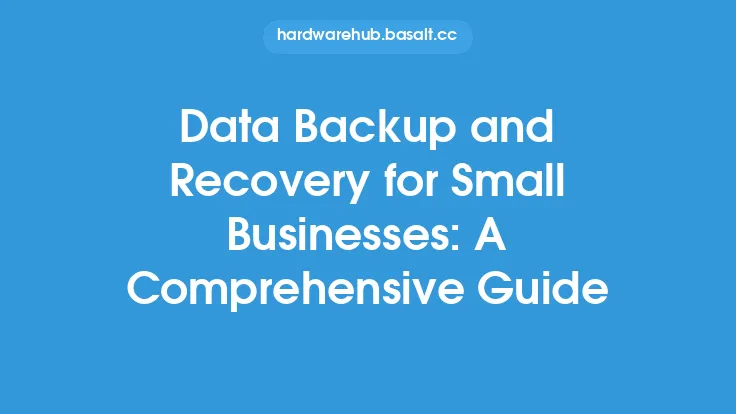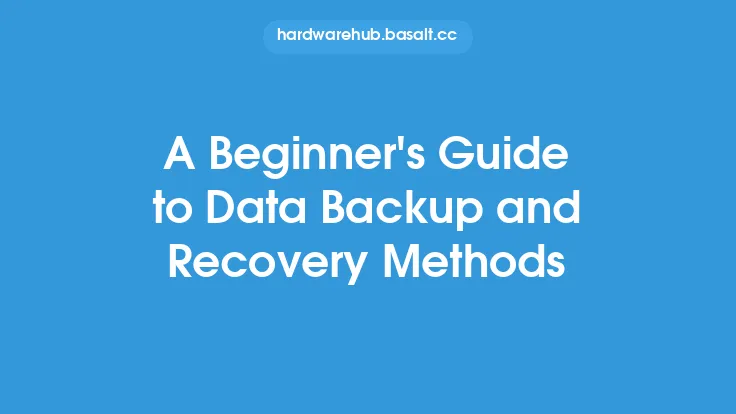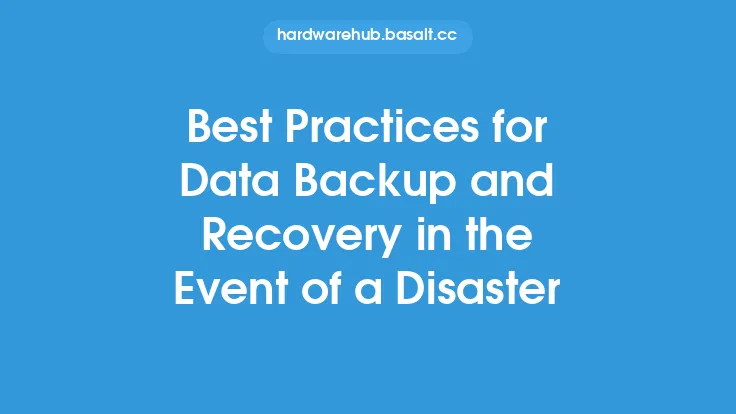Data backup is a critical aspect of data management, and having a solid backup strategy in place can help prevent data loss and ensure business continuity. One popular backup strategy is the 3-2-1 rule, which provides a simple and effective way to ensure that data is properly backed up and recoverable. In this article, we will delve into the details of the 3-2-1 rule, its benefits, and how it can be implemented in various environments.
What is the 3-2-1 Rule?
The 3-2-1 rule is a simple and effective backup strategy that involves creating three copies of data, storing them on two different types of media, and keeping one copy offsite. This rule provides a comprehensive approach to data backup, ensuring that data is properly protected against various types of failures, including hardware failures, software corruption, and natural disasters. The three copies of data can be stored on different devices, such as external hard drives, solid-state drives, or cloud storage services. The two different types of media can include a combination of local storage, such as hard drives or solid-state drives, and remote storage, such as cloud storage or tape drives.
Benefits of the 3-2-1 Rule
The 3-2-1 rule provides several benefits, including improved data protection, reduced risk of data loss, and increased business continuity. By creating three copies of data, organizations can ensure that they have multiple versions of their data, which can be used to recover from data loss or corruption. Storing data on two different types of media provides an additional layer of protection, as it ensures that data is not dependent on a single type of storage device. Keeping one copy of data offsite provides protection against natural disasters, fires, and other types of disasters that can affect an organization's primary location.
Implementing the 3-2-1 Rule
Implementing the 3-2-1 rule requires careful planning and consideration of an organization's specific needs and requirements. The first step is to determine what data needs to be backed up and how often it needs to be backed up. This can include files, databases, emails, and other types of data. The next step is to choose the storage devices and media that will be used to store the data. This can include external hard drives, solid-state drives, cloud storage services, and tape drives. The final step is to ensure that one copy of the data is stored offsite, which can be done using cloud storage services or by storing data in a remote location.
Technical Considerations
From a technical perspective, implementing the 3-2-1 rule requires consideration of several factors, including data compression, encryption, and deduplication. Data compression can help reduce the amount of storage space required, while encryption can help protect data from unauthorized access. Deduplication can help eliminate duplicate copies of data, reducing storage requirements and improving backup efficiency. Additionally, organizations should consider the type of backup software used, as well as the frequency and scheduling of backups.
Best Practices for the 3-2-1 Rule
To get the most out of the 3-2-1 rule, organizations should follow several best practices. First, they should ensure that backups are performed regularly and consistently, using a combination of full, incremental, and differential backups. Second, they should test their backups regularly to ensure that they are complete and recoverable. Third, they should consider using automation tools to simplify the backup process and reduce the risk of human error. Finally, they should ensure that their backup strategy is aligned with their business continuity plan, to ensure that data is available and recoverable in the event of a disaster.
Common Challenges and Limitations
While the 3-2-1 rule provides a comprehensive approach to data backup, there are several common challenges and limitations that organizations may face. One of the main challenges is ensuring that backups are complete and recoverable, which requires regular testing and validation. Another challenge is managing the cost and complexity of backup infrastructure, which can be significant for large organizations. Additionally, organizations may face limitations in terms of storage capacity, bandwidth, and network connectivity, which can impact the speed and efficiency of backups.
Conclusion
In conclusion, the 3-2-1 rule provides a simple and effective approach to data backup, ensuring that organizations have multiple copies of their data, stored on different types of media, with one copy kept offsite. By following this rule, organizations can improve data protection, reduce the risk of data loss, and increase business continuity. While there are several technical considerations and best practices to keep in mind, the 3-2-1 rule provides a comprehensive framework for data backup and recovery, and is an essential component of any organization's data management strategy.





